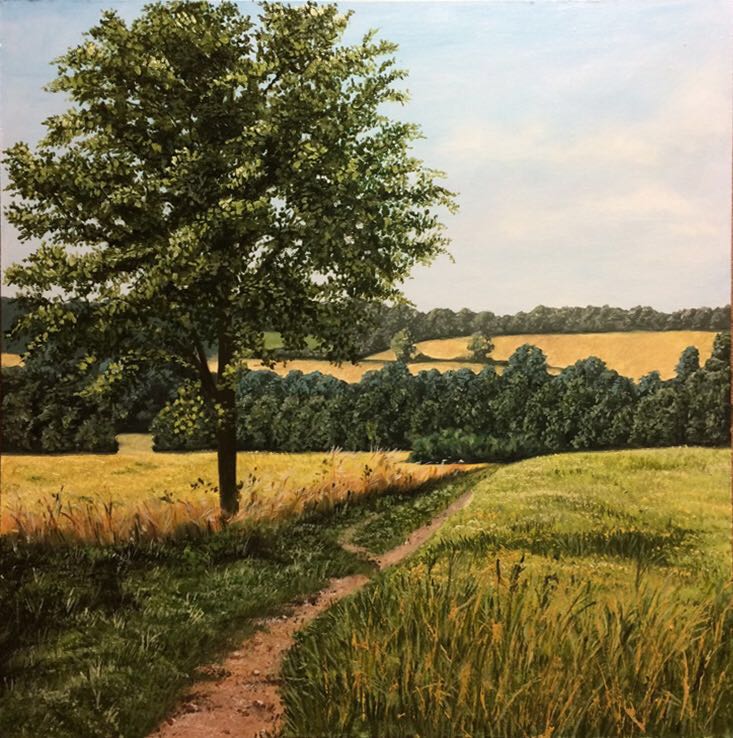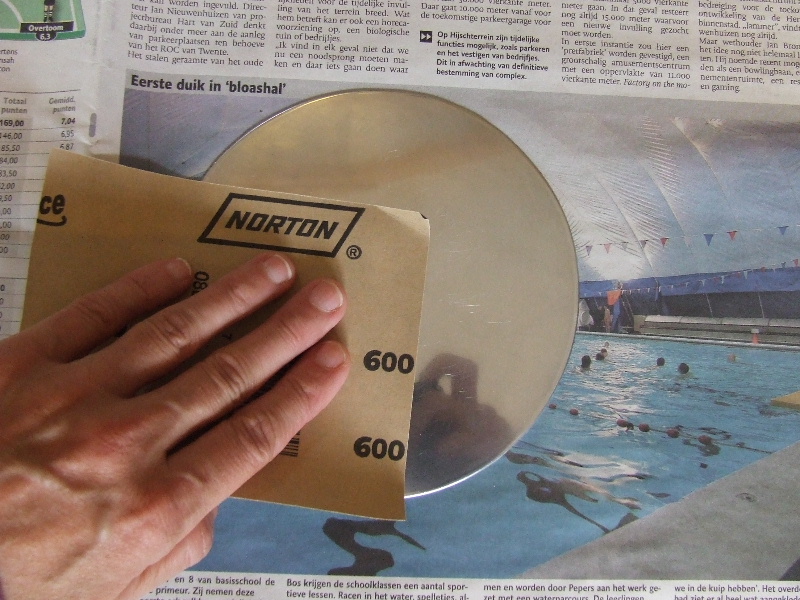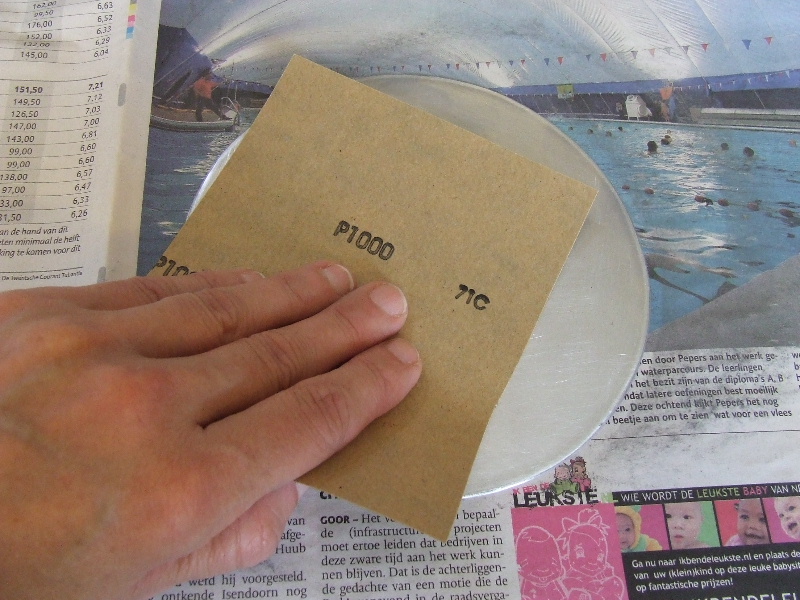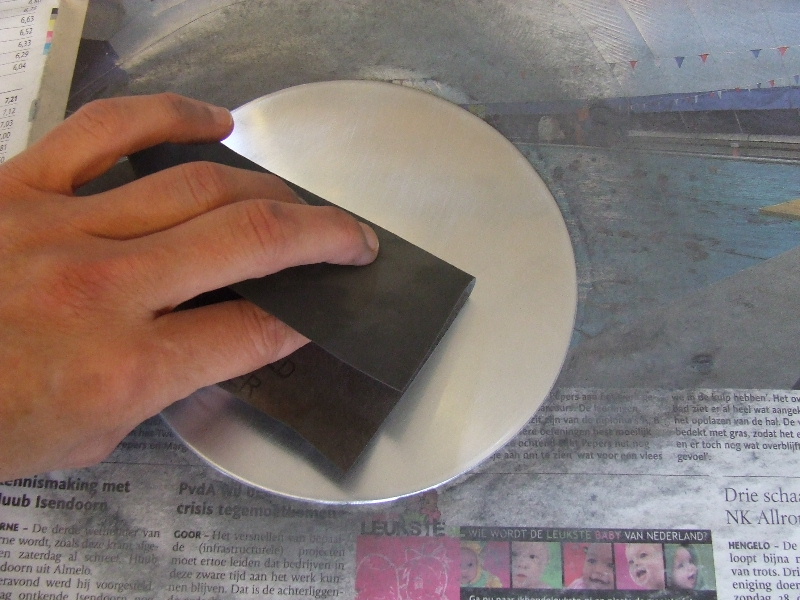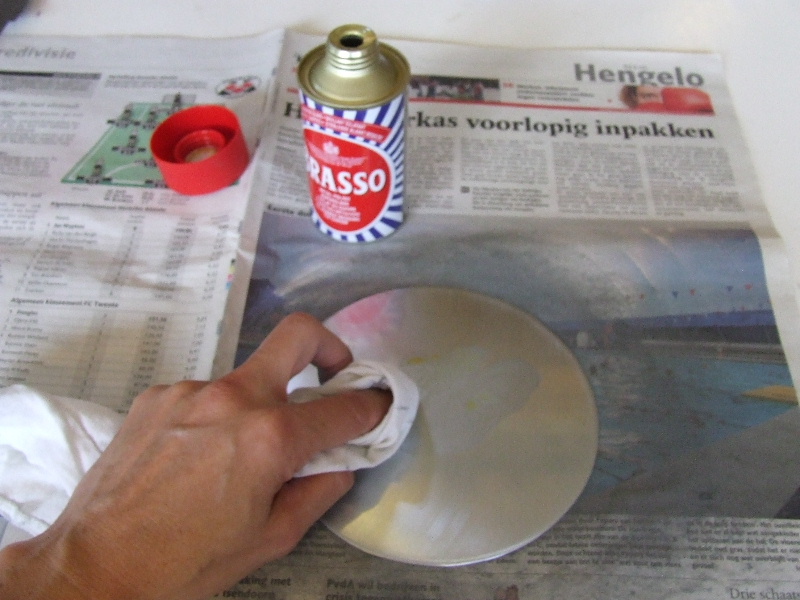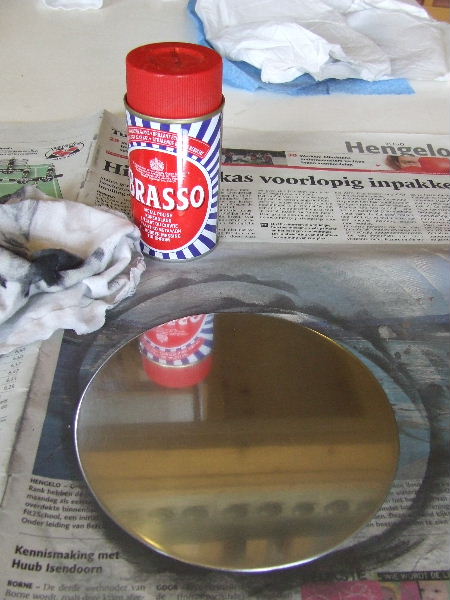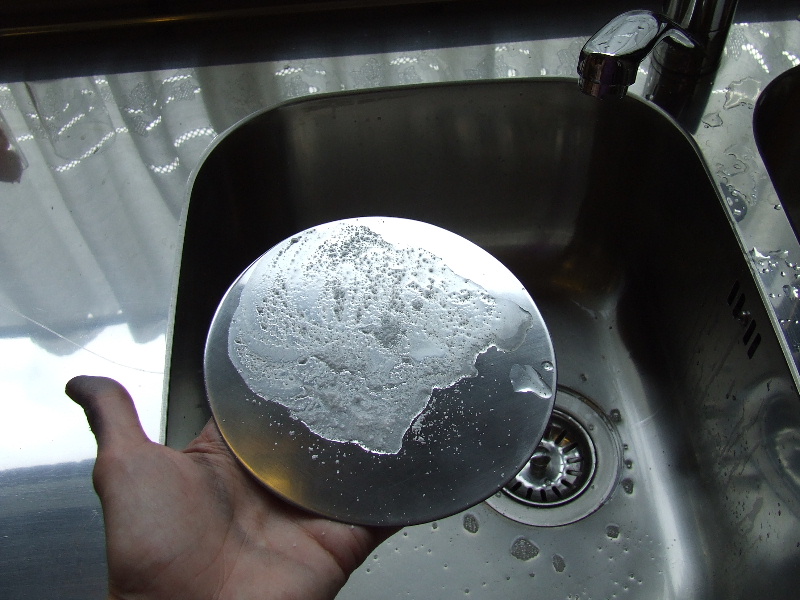After the plate has been cut to size and the edges beveled, it needs to be polished. The longer and more precisely you polish, the whiter the whites will be. There will always be some ink left in tiny, barely visible scratches. That's okay; some artists even choose not to polish the plate so precisely. Here, I’ve chosen to polish with three different grits. I start with the coarsest grit, 400-600. Whether you sand and polish the side edges of your plate is up to you. Some artists find it more beautiful, while others like the black outline that automatically appears when the edges aren’t polished.
|
When I can't make the surface any smoother with the 400-600 grit, I switch to a finer sandpaper. I sand the entire plate again, always working in one direction. When I've finished that direction, I turn the plate 90 degrees and work in the other direction. Of course, you can also turn 45 degrees or sand in circles. Each method will create a slightly different effect in your final print. You just need to experiment. Although it’s best to wet the sandpaper for sanding, you can also sand dry. This saves some mess.
|
Finally, I sand the entire plate one last time with an even finer grit. Here, I’ve chosen grit 1500, which is the finest I could find. You can get even finer grits, but they require some searching. Notice that I have an old newspaper underneath the plate, which gets very dirty. Be prepared for your work surface and hands to get quite messy during this task.
|
When I’m satisfied with the finest sanding, I polish the plate with metal polish. I use Brasso and an old cotton cloth. Old shirts and pajamas work great. Apply some Brasso to the cloth and rub until the plate first turns black and then shines clean. You can wipe off the last remnants of Brasso with a clean part of your polishing cloth.
|
After polishing, the etching plate will shine like a mirror. It's now important to either apply etching ground and covering varnish immediately or wrap the plate carefully in a non-scratching material. Otherwise, all your hard work will be for nothing. If you’re not applying the etching ground and covering varnish right away, rinse the plate gently and fold it carefully in a cotton cloth or a soft dishcloth.
|
To make the etching plate ready for use, it must be degreased first. Wet the plate thoroughly under the tap, then sprinkle some Biotex on it. Use a clean finger to spread the Biotex over the plate to remove all grease. Repeat if necessary. If grease remains on your plate, the etching ground won't adhere properly and will come off during etching, ruining your work.
|



